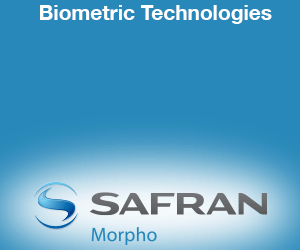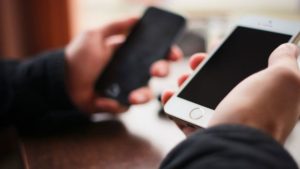Physical access control represents a diverse range of solutions to a very simple, age old problem: how do I lock my door? As we examined last week, now that biometrics have landed on the scene and taken off as the best way to control access to limited areas, the answer to that question depends greatly on the context of the security deployment.
 That having been said, no matter what the situation, biometrics are the best answer. With strong authentication solutions – fingerprint, iris, face, vein or otherwise – a great level of assurance is gained. Authorized personnel can’t be impersonated by users carrying stolen or borrowed keys, and unlike security PINs, biometrics can’t be guessed or forgotten.
That having been said, no matter what the situation, biometrics are the best answer. With strong authentication solutions – fingerprint, iris, face, vein or otherwise – a great level of assurance is gained. Authorized personnel can’t be impersonated by users carrying stolen or borrowed keys, and unlike security PINs, biometrics can’t be guessed or forgotten.
When it comes to choosing a physical access control system, there emerges a question of balancing the level of security demanded with the amount of convenience desired. In the examples we looked at last week, we saw that high throughput environments are best served by solutions like Morpho’s super-quick Finger On the Fly system, while locations willing to sacrifice some convenience for greater security may be better off with a slower solution that combines multiple biometric factors (including smart cards).
The conversation around exactly what convenience means when we talk about physical access control is changing thanks to the rise of mobility. In the same way that mobile biometrics on smartphones and smart cards is transforming the payments industry, it is also presenting new opportunities in bringing more convenience to the act of locking and unlocking our most important doors.
Bringing Your Own
 When mobility comes up in conversation about biometrics, it generally evokes images of smartphones. Thanks to new innovations in biometric software, fingerprint sensors, iris sensors, secure elements and cloud security, handheld mobile devices have become extremely versatile authentication gadgets. That versatility is allowing smartphones to make their way into physical security systems.
When mobility comes up in conversation about biometrics, it generally evokes images of smartphones. Thanks to new innovations in biometric software, fingerprint sensors, iris sensors, secure elements and cloud security, handheld mobile devices have become extremely versatile authentication gadgets. That versatility is allowing smartphones to make their way into physical security systems.
Most commonly referred to as Bring Your Own Credential (modeled after the term ‘BYOD’ referring to the phenomenon of personal smartphones entering the enterprise workplace), the inclusion of consumer biometric smartphones into a physical access solution presents a number of conveniences. Already supported by companies like EnterTech Systems, BYOC security makes management easy, given that employees have supported devices.
In the case of aptiQmobile from Allegion, the user need only download an app from Google Play or the App Store and have their employer issue the credentials remotely to turn their device of choice into an NFC proximity factor. Allegion’s BYOC solution is designed for pre-biometric smartphones, allowing for users with older phones to enter their buildings on the assurance of their lock screen passwords, but the benefits of smartphone physical access control are still apparent with it: an aptiQmobile enabled phone – whether protected by a password or a biometric factor – can’t be used as a key unless the user can get past the lock screen.
This being true of any smartphone factor means, of course, that BYOC is by nature a minimum two factor security system with credential already owned by its users. A great way to keep things convenient and to cut down on deployment cost. Just make sure you have a robust BYOD policy to back it up.
Revolutionizing the Key Card

Until biometrics truly become the standard method of authentication on all smartphones, BYOC will be limited to low risk scenarios. But that doesn’t mean the two factor convenience of device-plus-biometrics access solutions can’t be realized right now. Norwegian company, Zwipe, has combined fingerprint sensors with contactless card technology in order to bring the same kind of convenience to the market while providing a uniformly stong level of security.
The Zwipe biometric access card works with card-based access control systems, adding a biometric factor on the credential itself. Because of this design, it is an easy way to add fingerprint biometric authentication to an existing contactless card system. Unlike BYOC, each card has the same level of strong authentication, making this kind of specialty solution very appealing.
Bolstering With Mobility
 Physical access solutions can be bolstered by mobility in another way that doesn’t involve the actual authentication process. Smartphones can be integrated into a static physical access control system in a support capacity, giving security personnel the mobility and freedom to best respond to threats identified by biometric technology.
Physical access solutions can be bolstered by mobility in another way that doesn’t involve the actual authentication process. Smartphones can be integrated into a static physical access control system in a support capacity, giving security personnel the mobility and freedom to best respond to threats identified by biometric technology.
Mobility in a physical access control support role can be observed in a number of real life deployments, many involving facial recognition. At St Mary’s high school in St. Louis, which has recently implemented facial recognition cameras for access control, staff are notified of flagged persons who are denied access to the building via email or SMS. A very similar facial recognition security deployment from FaceFirst exists at Tucumen International Airport in Panama.
FST Biometrics, a company that provides In Motion Identification (IMID) solutions for access control, takes the mobile support feature to a new level. Its recently announced deployment in Sao Paulo, Brazil, features technology based on its IMID Mobile solution controlling access to vehicle entry points. Not only can the user’s phone be used as a credential in this deployment, but once authenticated, security personnel are sent a user profile detailing the entrant’s permissions. The authenticated person never has to leave her car, and the security person is best equipped to deal with any transactional anomalies.
It is clear that the benefits offered by smartphones and biometric smart cards can bring a great level of convenience to security deployments, and while mobile tech’s role in this area of application will be limited -at least at first – there is no denying that it’s influence is helping the physical access control arena become even more diverse in terms of solutions. While non-mobile physical access control solutions will always be necessary and continue to grow in importance, mobile biometrics present even more ways to answer that age old question of how to open your door.
Stay posted to FindBiometrics throughout April as we delve deeper into biometric physical access control. Follow us on Twitter and be part of the conversation by using the hashtag #FBPhysicalAccess. Don’t forget to sign up for our exclusive webinar Balancing Convenience and Security in Biometric Access Control.
Physical Access Month is made possible thanks to our sponsors, Morpho (Safran) and SRI International.
—
April 15, by Peter B. Counter


Follow Us